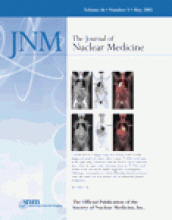Brain Imaging in Schizophrenia: Insights and Applications
Tonmoy Sharma and Xavier Chitnis
Chicago, IL: Remedica Publishing, 2000, 67 pages, $24
This is a booklet of 5 short chapters covering brain imaging in schizophrenia. It starts with 2 chapters on structural and functional imaging of the brain, continues with 2 more chapters on the application of structural and functional brain imaging to schizophrenia, and ends with a chapter on factors, both genetic and nongenetic, that might affect brain imaging in schizophrenia. Although the authors, from the Institute of Psychiatry, London, U.K., do not specify the audience, the general and introductory overtone suggests that the booklet is mostly for those who have not practiced brain imaging.
The first chapter describes anatomic methods of brain imaging, including CT and MRI, and has good introductory remarks about CT and MRI in general. The citation of 4 references from 1999 is probably adequate. Chapter 2 describes functional methods of brain imaging, including PET/SPECT and functional MRI, and describes the empiric nature of functional MRI and activation studies. This chapter concludes with a description of various MRI spectroscopy compounds, including 3H and 33P.
Chapter 3 describes the structural imaging findings for schizophrenia and concludes by stating that CT and MRI have found widespread structural abnormalities in schizophrenia. However, their nonspecific nature and the similar findings in patients without schizophrenia are not mentioned. Chapter 4 describes SPECT and PET findings for D2 receptors and for serotonin receptors with and without drug challenge, in contrast to functional MRI findings, and addresses the limitations whether the findings are related to the state of the brain or are a trait of the disease. MRI spectroscopy findings, including those related to changes in N-acetyl aspartate (NAA) and NAA-to-choline ratios, are described, and the authors mention that MRI spectroscopy results regularly produce conflicting findings that need further investigation before a definite question is made. The final chapter, on genetics, describes the famous studies on twins. Considering the findings of those studies and of familial studies, the authors conclude that a genetic susceptibility to schizophrenia is expressed by structural and functional brain abnormalities. They do recognize the importance of nongenetic factors but give no specific weight to genetic versus nongenetic origins.
Overall, this booklet is interesting as a brief summary of the brain-imaging literature and psychiatric literature between the late 1980s and 2000. The authors briefly but aptly introduce the capabilities and limitations of brain imaging and brain imaging findings in schizophrenia. The extension into an explanation of genetic findings may be speculative but is at least attempted and leads the audience to think in that realm. In summary, this is a good introduction of brain-imaging techniques to audiences from the fields of psychology and psychiatry. For practitioners in brain imaging, this is a brief review of the relevant schizophrenia literature in the last decade.







